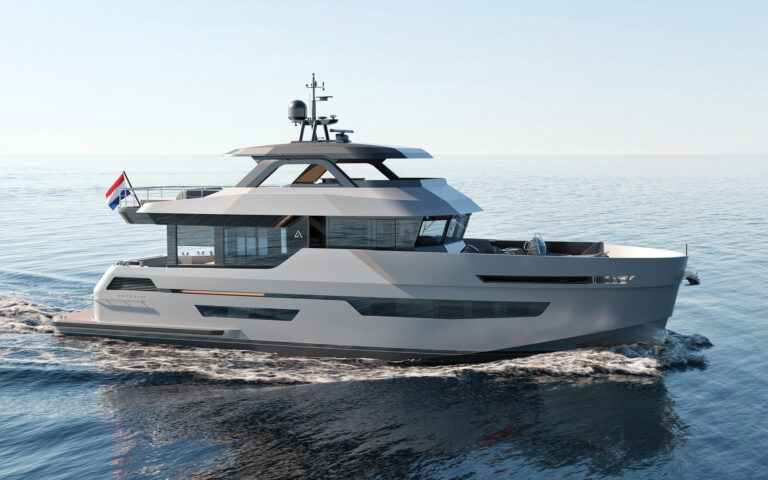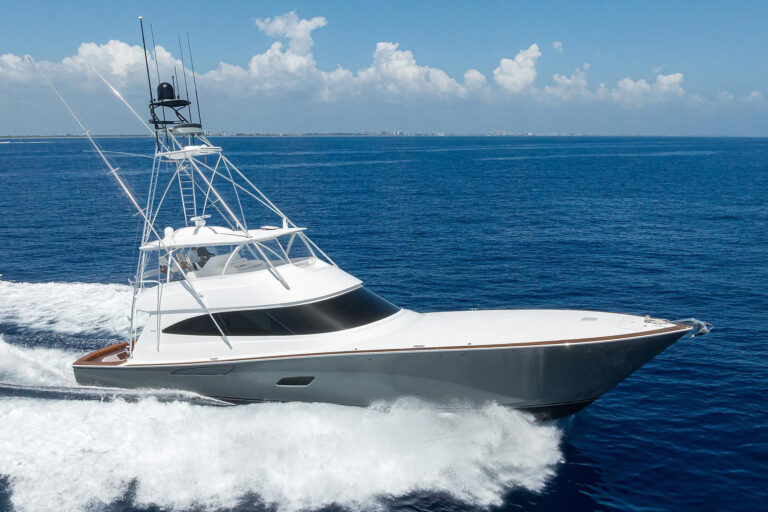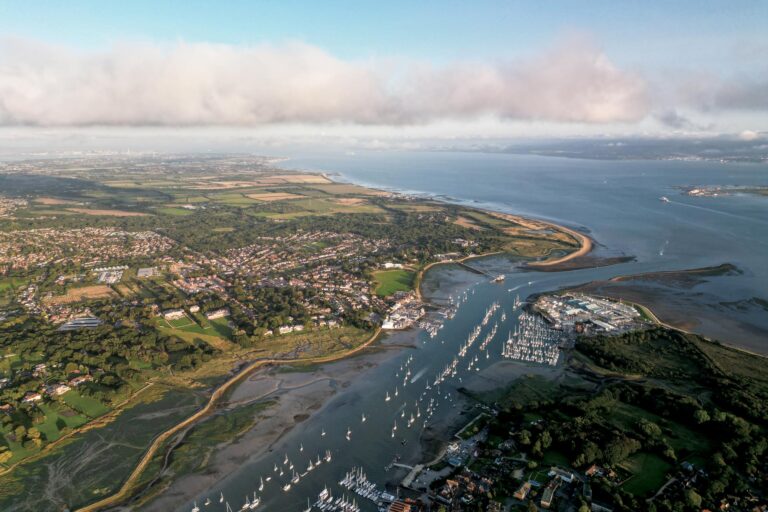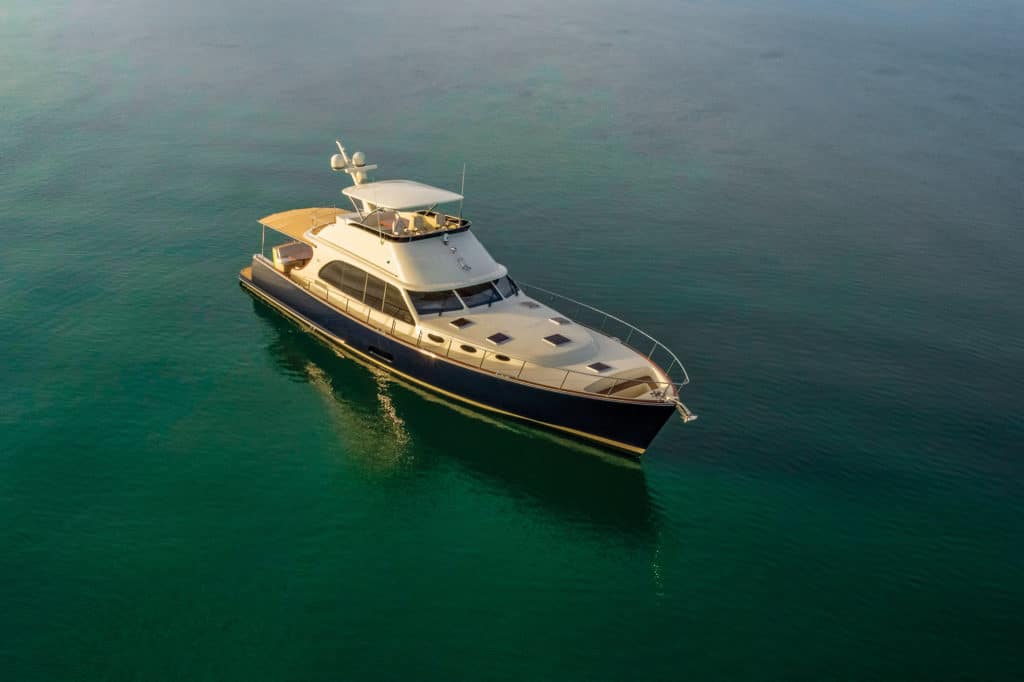
The southern coast of Fairfield County, Connecticut, is New England—but not. You’re just as likely to see as many Boston Red Sox hats as New York Yankees logos. Many of the houses are true manses, lacking the Puritan-flavored temperance that holds architectural sway farther north. And the seemingly omnipresent hydrangeas, well, they’re bigger than yours.
The locale was a fitting place to test the Palm Beach 70, a yacht that plays with the Down East-style boating tradition in a delightfully subversive way.
Her lines are much sleeker than those of most other boats in her class, many of which tend to skew more classical and, frankly, more boxy. This boat is sexy, with a raked windshield and gently curving sheer line that reaches aft toward a generous tumblehome. The lines are so low-profile, it would be forgivable if you failed to notice she has a flybridge.
The 70’s slightly unorthodox look is in large part due to Palm Beach’s founder, Mark Richards, an Australian with a legendary sailing pedigree who builds his motoryachts in Johor Bahru, Malaysia. Richards’ sailing background certainly plays a role in the yachts’ low-profile looks, and it also shines through in a few other places.
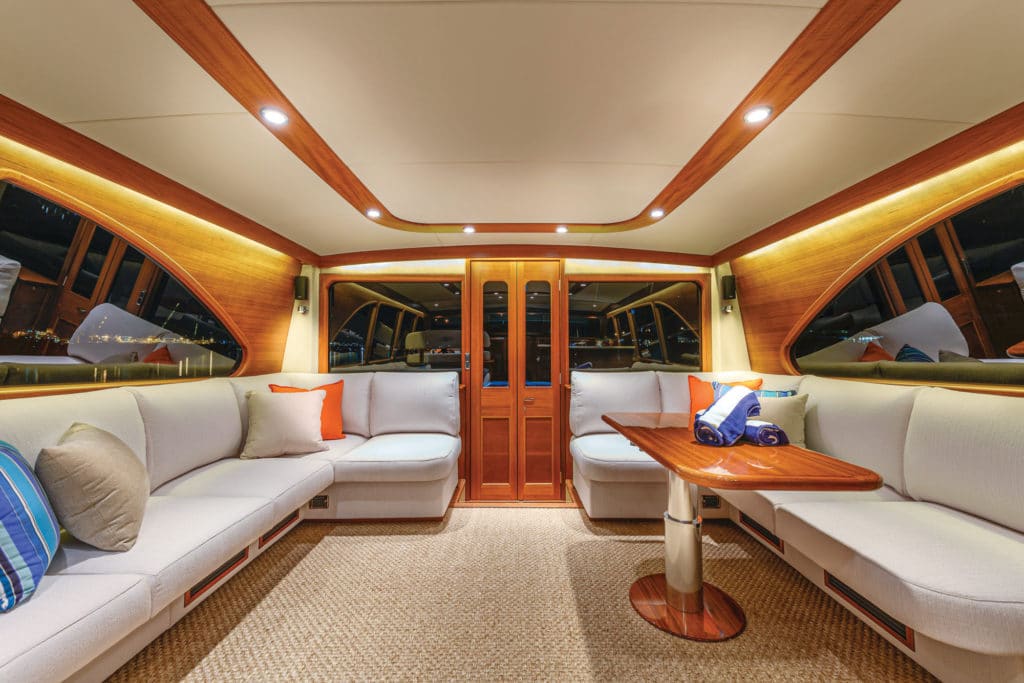
Like the Palm Beach yachts that came before her, the 70 is built to be no muss, no fuss. Analog gauges are a brand staple. Interior design is clean and functional. The tender launches from the garage via a hand crank. The boats tend to feel almost like they should be wind-powered.
And yet, in the belly of this 70 cranked two 1,000 hp Volvo Penta D13 straight-shaft diesels. (Twin 1,000 hp Volvo Penta IPS1350s are an option.) The D13s proved a good power choice out on Long Island Sound on a blustery yet blue-sky August morning. I recorded a 30.7-knot top speed—shy of the builder’s reported 33 knots but certainly in the ballpark. At a 25-knot cruise, she had a range of 732 nautical miles, approximately the distance between Newport, Rhode Island, and Wilmington, North Carolina. A tick faster at 28 knots, the yacht turned hard over in two boat lengths to both port and starboard, and glided through other vessels’ wakes with nary a shiver.
And glided is the appropriate term. The Palm Beach 70’s hull takes design cues from the world of competitive sailboat racing. As such, it never truly gets on plane. It slices through waves instead of rising and falling with them. The hull is warped and has a superfine entry that pierces slop before undulating aft to a flat transom section with about 6 degrees of deadrise. That design aids in stability underway and at rest, while a keel keeps the boat on the straight and narrow when it comes to tracking. The hull also lacks any strakes. The entire design comes together to offer not only an exceptionally smooth ride but also a bonus: The 70, despite displacing 70,500 pounds dry, barely throws off any wake at all.
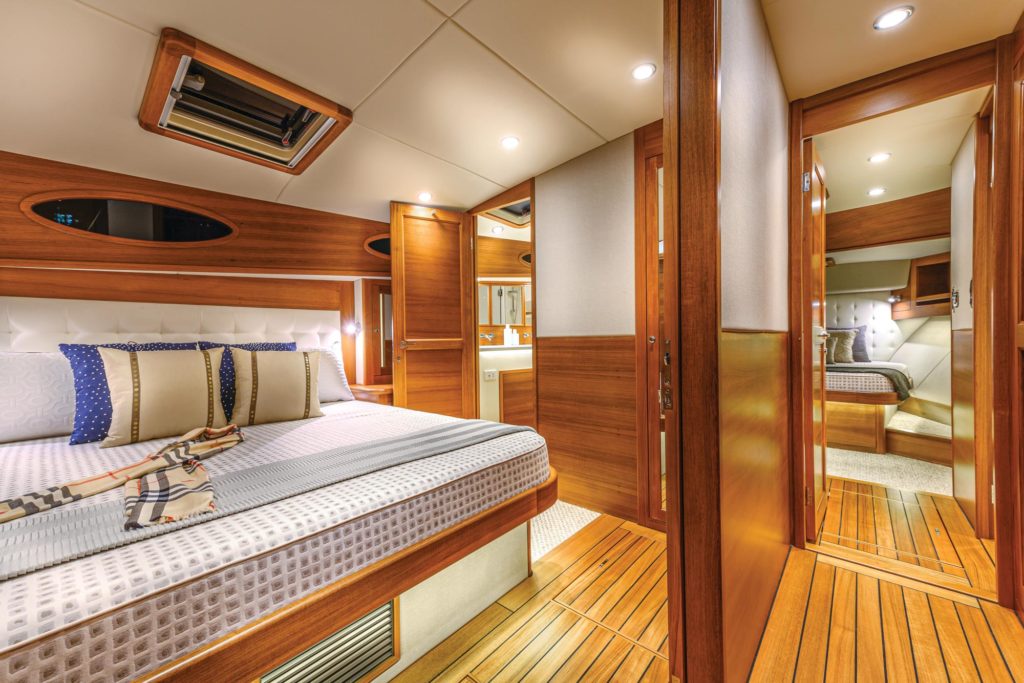
On board, one of my favorite touches is inset seating for two at the tip of the bow. Palm Beach refers to this area as the rumble seat, a reference to the open-air seating found in prewar-era roadsters. It’s a mildly impractical detail that heightens this yacht’s unmistakable character.
Guests also will find unusual options on the accommodations level, where everything except the structural bulkheads is up to the owner’s druthers. This particular Palm Beach 70 has a master stateroom to port accessed through twin sliding doors—an unusual but welcome feature. Also in the master is a king-size berth complemented by a forward head with his-and-her sinks. Twin 5-foot-tall hanging lockers are aft, and there is 6 feet, 6 inches of headroom throughout the stateroom.
A forward VIP stateroom has an island queen berth and a hatch overhead that provides natural light as well as a way out in an emergency. A single hanging locker of similar size to the master’s is aft.
To make extra headroom in the guest stateroom to starboard, Palm Beach moved the helm (which was to starboard one level up in the salon) aft a few feet. Other yacht owners might choose to put the galley where that guest stateroom was; this owner had the galley up on the main deck.
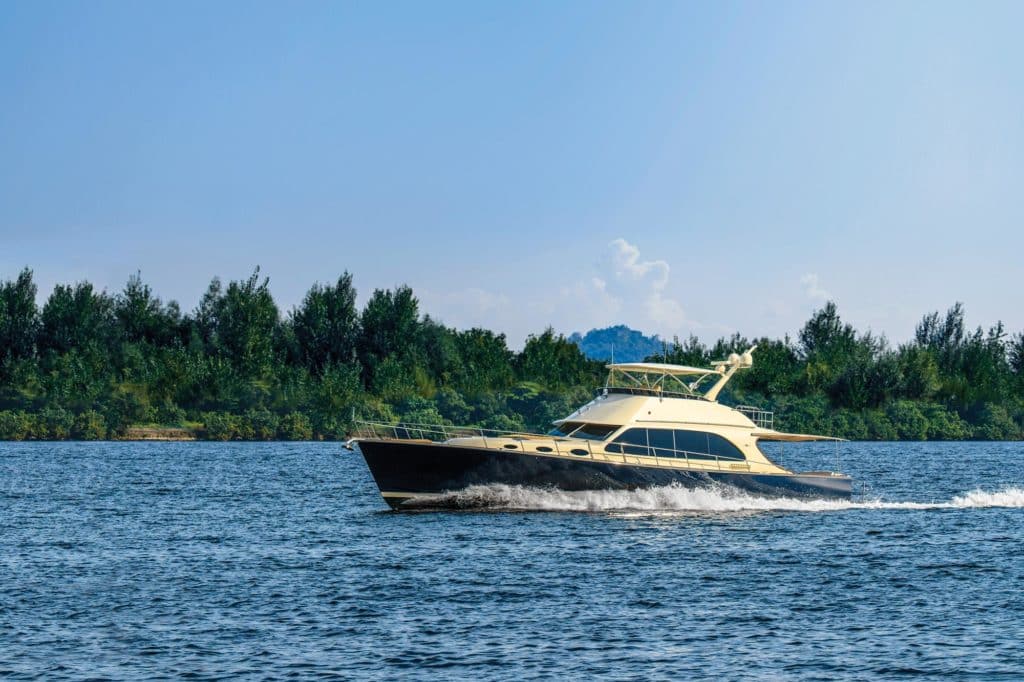
The 70’s flybridge has a forward helm with three Stidd chairs and excellent sightlines. A hardtop provides shade for the forward section of the deck, and Isinglass is available for the wind-phobic. At the center of the flybridge, an L-shaped settee has a teak alfresco dining table with notably tight joinery. A barbecue and sink are on the steeply crowned after section of the deck. The crowning is something that owners may need to get used to, particularly if the deck is slick, but Palm Beach’s design team likes the aesthetic appeal.
After heading back to shore, I sat down at a waterside restaurant with some members of the Palm Beach team and ordered fish tacos. Just as the waiter brought out our food, the 70 glided by, en route to her next adventure. The waiter put his hands on his hips and said: “Man, that boat’s pretty. Every time I see it, I can’t not stare. There’s just something a little bit different about it, you know?” And I did.
Grand scheme
In 2014, Grand Banks acquired Palm Beach Motor Yachts and brought on Palm Beach founder Mark Richards as CEO of the enlarged group, which also builds Eastbay. Richards imbued Grand Banks brand with modern touches, including his signature hull design and loads of carbon fiber, in the interest of creating faster and more efficient yachts. These days, 30-knot top-end speeds are not uncommon for Grand Banks, which previously identified with comfort, not quickness.
Sleep Easy
The Palm Beach 70 can be ordered with custom layouts, but the standard accommodations plan has overnight berths for seven people. The crew quarters are accessed separately, from the salon, giving everyone their privacy.
The Lineup
Palm Beach Motor Yachts, founded in 1995, takes its name from its hometown of Palm Beach, Australia. Today, the company builds its boats in Johor Bahru, Malaysia. The brand offers seven models—42, 45, 50, 52, 55, 65 and 70—as well as the 40-knot GT50 that debuted at this past September’s Newport International Boat Show. The brand’s DNA traces back to the sailing roots of founder Mark Richards. Every Palm Beach vessel has a pared-down, elegant feel, particularly in the interiors, where the vessels often evince the feel of a mechanized sailing yacht.
Take the next step: palmbeachmotoryachts.com






